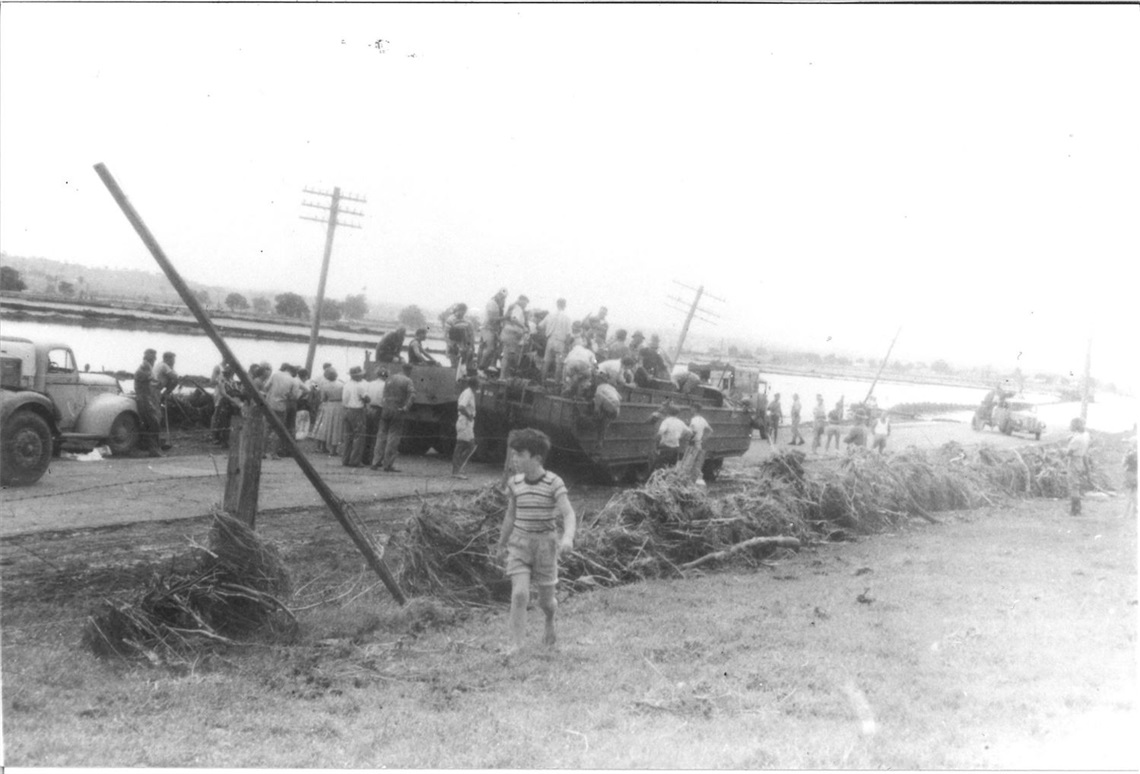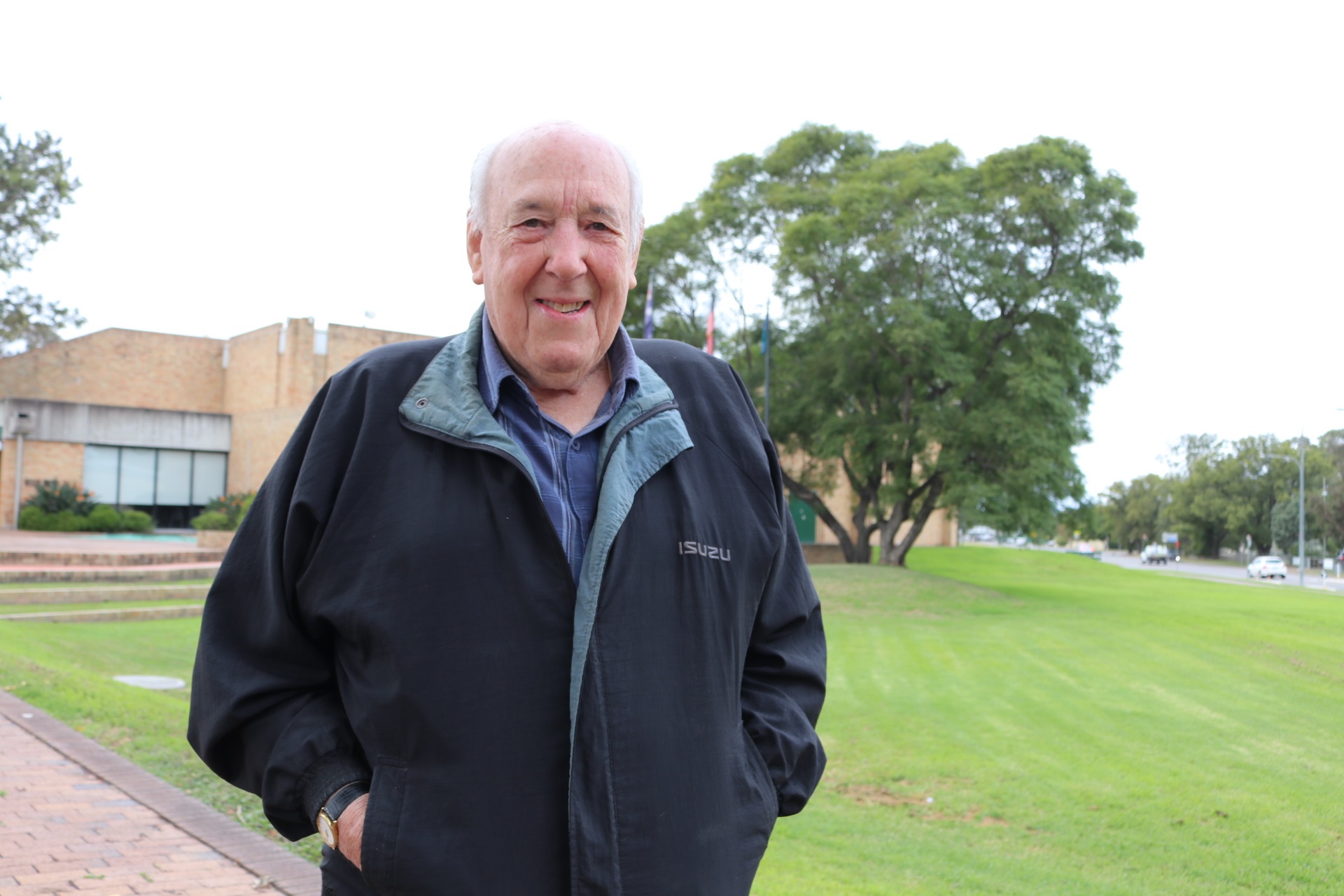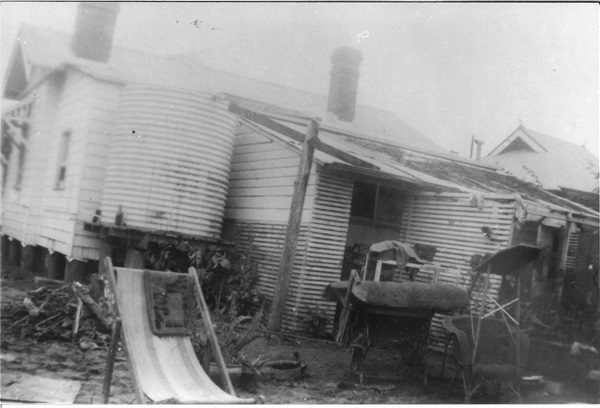Remembering the 1955 flood + commemorating 70 years
Published on 24 February 2025

What John Martin remembers most about the 1955 flood is bananas. Lots of them.
As Australia marks the 70th anniversary of one of the most devastating natural events in its history, when floodwaters destroyed townships across the Hunter Valley including Singleton, Singleton’s most decorated citizen remembers being a 20-year-old fresh returned from national service when the river broke and gushed into Hunter Street at 3pm on Thursday 24 February 1955.
John Martin OAM, whose long list of accolades include Freeman of the Shire and life membership of the State Emergency Service (SES) for decades of service, tried to walk home to Fitz Street on the night the flood submerged 95 per cent of the town, but was knocked off his feet in chest-height water at Church Street and realised he had to wait it out. It would be another two days and after assisting the sergeant of police to get to hospital for treatment for a broken leg—via a dangerous trip in a small boat—before his family knew he was alive.
“The town was a bloody mess,” he recalled. “There were logs and rubbish everywhere. Burdekin Park, I remember, there was a lot of dead animals in Burdekin Park—sheep and cattle. The smell was terrible. And everything was covered in mud. We had no water—the water works broke down. No electricity. No sewerage.
“There were three semitrailer loads of bananas up on McDougalls Hill—they were being transported and couldn’t get through Singleton. So, we had plenty of bananas. You’d go down the street the day the after the flood and your bloke would say, ‘You want a banana? Here, take a case!’”

It was in the aftermath of the 1955 disaster that the State Emergency Service was born—then known as Civil Defence—and Mr Martin was Singleton’s first controller. Among his first duties was learning to be prepared for the hydrogen bomb.
“We studied atomic warfare,” Mr Martin said. “But in later years, we did the planning for floods, evacuations, what we’d do if 1955 happened again. Back in those days we used to calculate the river depth by reading the gauges on the bridges, and nowadays they do it by computer.
“There was a person drowned in Glenbawn Dam, and we went and searched for the body. We helped the police if they had a search on for somebody—did what they asked us to do. We got involved with the Newcastle Earthquake—I was down there for 14 days. Then when they had that landslip at Thredbo, I was in charge of the second task force—300 volunteers—and we worked down there for 10 days.”
Mr Martin marvels now at the growth and professionalism of the SES, which will be on display at the Singleton Emergency Services Expo on Saturday 8 March from 9am – 12pm in Civic Park.
“There’s a lot of boats, a lot of training and a lot of good people. And to think we started with nothing,” he said. “I’d be down there helping them now if could. When it’s raining heavy, I still follow the weather maps. I’ve got a very fair idea of what’s going to happen.”
And Mr Martin advises people that they should also have an idea of what will happen in a flood.
“What people need to do is when they buy property, find out where the flood water goes and be prepared to move out if they’ve got to, and then be prepared to do that when it happens. And don’t drive in the water.”
Experience a snapshot of this historic event 70 years later at Singleton Public Library where an exhibition of photographs showcasing the destruction of the 1955 flood and the strength of the community in the aftermath is now showing.

Historical images from Singleton Public Library Collection.